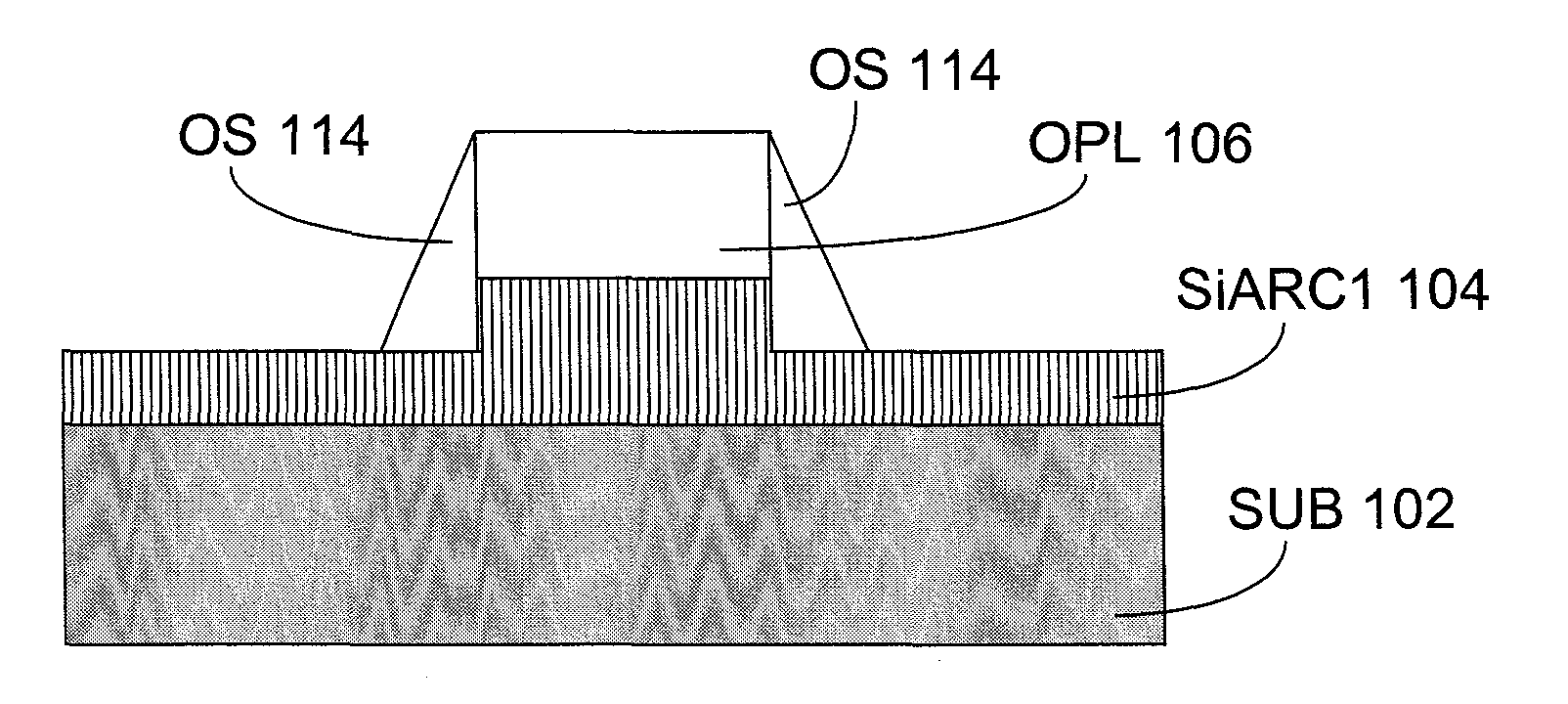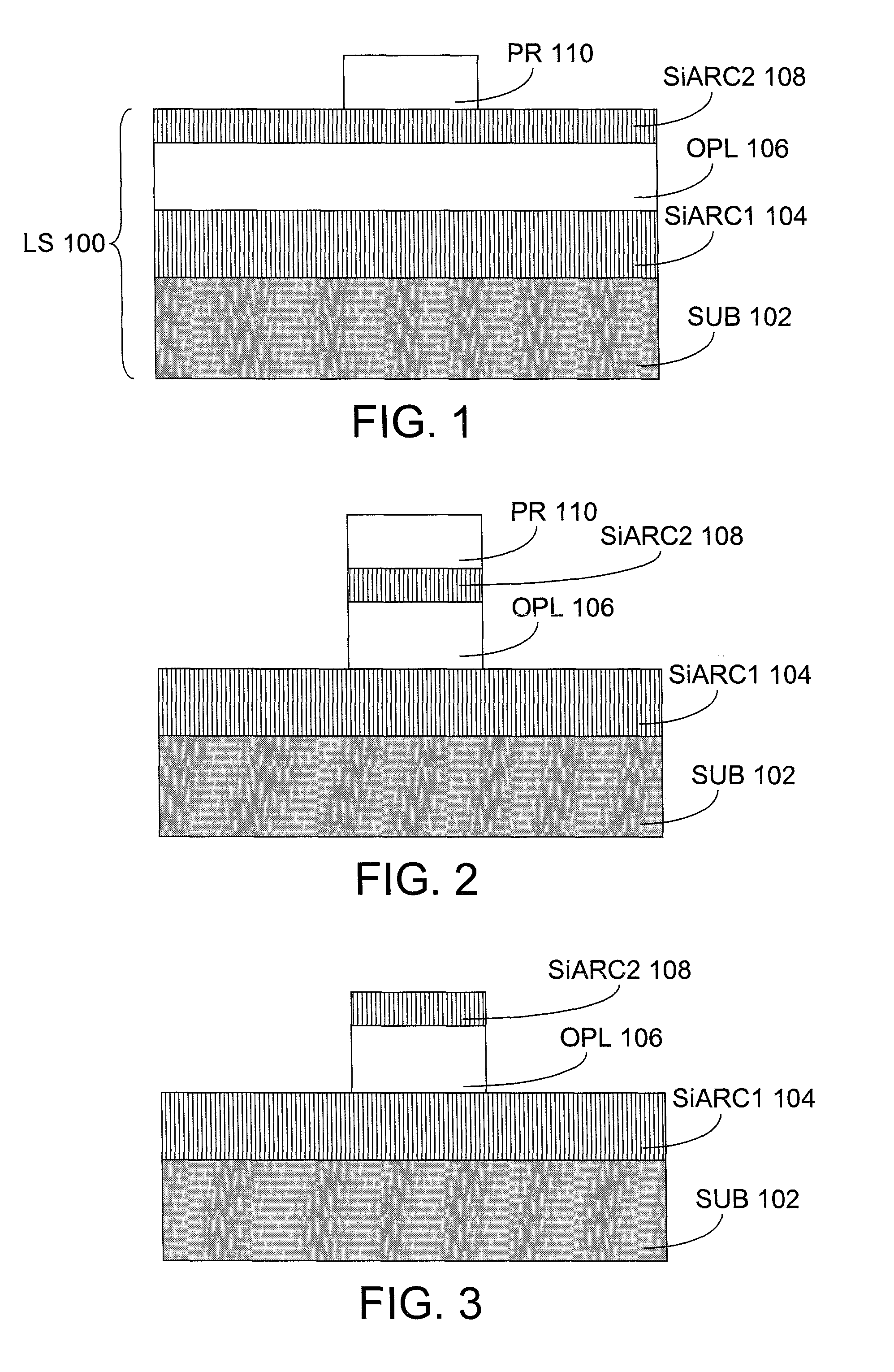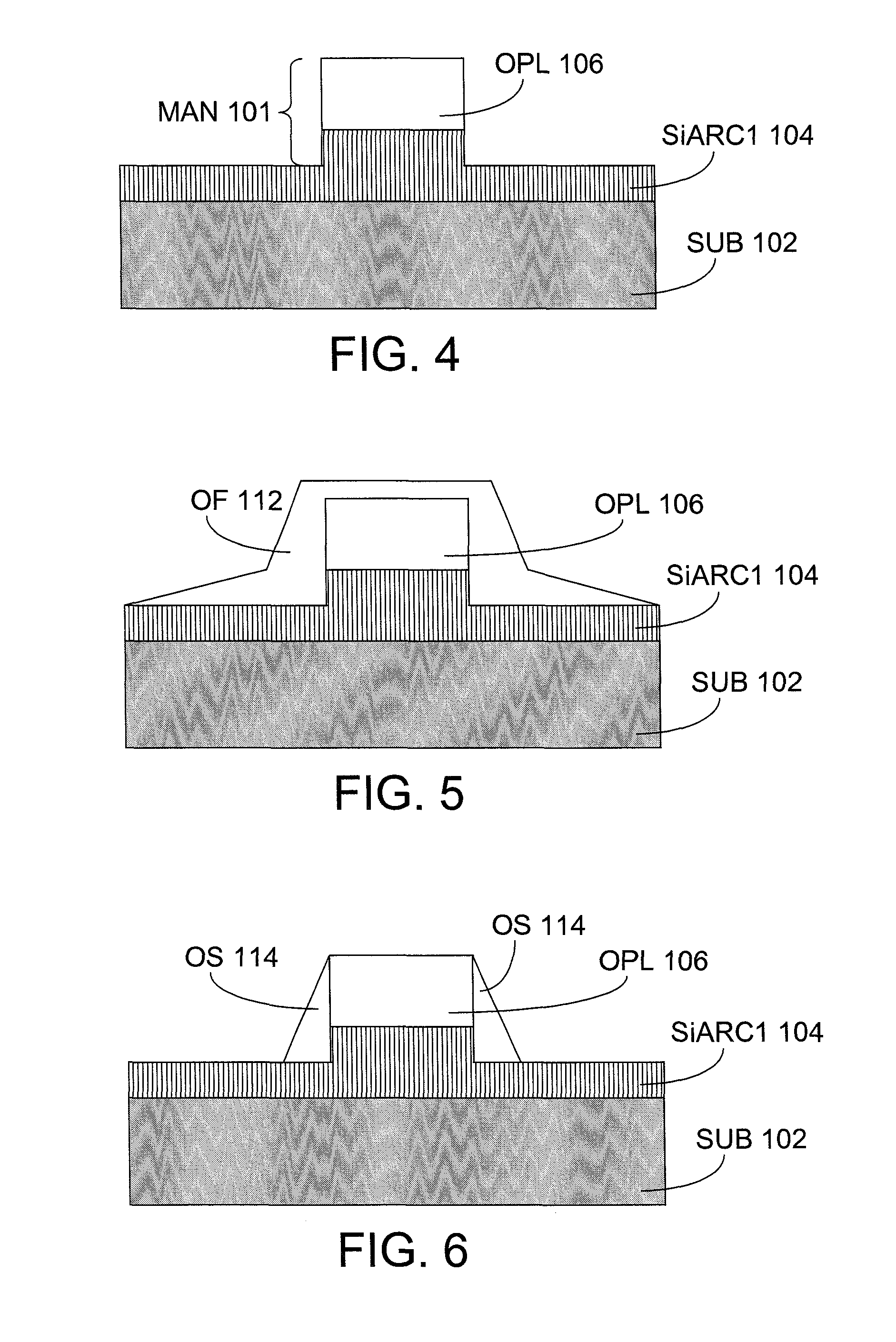Sidewall image transfer using the lithographic stack as the mandrel
a technology of lithographic stack and sidewall, applied in the field of photolithography, can solve the problems of power consumption control issues, performance degradation, yield loss, etc., and achieve the effects of reducing the size of structural features, reducing cost and size, and increasing the amount of circuitry
- Summary
- Abstract
- Description
- Claims
- Application Information
AI Technical Summary
Benefits of technology
Problems solved by technology
Method used
Image
Examples
Embodiment Construction
[0025]Pitch doubling (i.e., spatial frequency doubling) will likely become ubiquitous as semiconductor production focuses on smaller sizes (e.g., 22 nm or smaller). What is needed is a lithographic (litho) level agnostic pitch doubling scheme with a low COO. Since the spacer sets the CD, very tight control of conformality and deposition thickness is needed.
[0026]Current SIT techniques utilize a poly (polycrystalline silicon) mandrel. The SiN spacer is deposited (e.g., using PECVD) around the poly mandrel. The mandrel is removed and the remaining spacer is used as a mask for lower levels (e.g., the spacer image is transferred down to the lower levels). This process tends to necessitate usage of high temperatures for the poly. These high temperatures are not compatible with BEOL levels. In addition, the COO is higher because of the sacrificial mandrel deposition (i.e., deposition of mandrel layers, used for forming the sacrificial mandrel).
[0027]In view of the foregoing, the exemplary...
PUM
| Property | Measurement | Unit |
|---|---|---|
| thickness | aaaaa | aaaaa |
| thickness | aaaaa | aaaaa |
| thickness | aaaaa | aaaaa |
Abstract
Description
Claims
Application Information
 Login to View More
Login to View More - R&D
- Intellectual Property
- Life Sciences
- Materials
- Tech Scout
- Unparalleled Data Quality
- Higher Quality Content
- 60% Fewer Hallucinations
Browse by: Latest US Patents, China's latest patents, Technical Efficacy Thesaurus, Application Domain, Technology Topic, Popular Technical Reports.
© 2025 PatSnap. All rights reserved.Legal|Privacy policy|Modern Slavery Act Transparency Statement|Sitemap|About US| Contact US: help@patsnap.com



